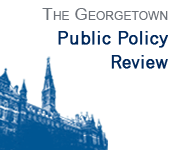by Rachel Bodily
If you managed to escape airport fever checks, ignore the preponderance of public hand sanitizer dispensers, or misread the denial of a handshake, the high number of clever pig-oriented costumes this Halloween should have clued you in. With the addition of the media fervor, the effects of the swine flu pandemic have been hard to ignore. The Center for Disease Control estimates that 22 million Americans have contracted the H1N1 virus between April and October 2009, and the World Health Organization reports at least 6,770 deaths worldwide. While the pandemic has not yet reached the severe levels initially predicted, it has the potential to pose significant economic costs to a strained global economy and has brought several issues of global health maintenance to light.
Economic Impact
In a 2006 study entitled Global Macroeconomic Consequences of Pandemic Influenza, the Brookings Institution modeled the global economic impact of an influenza pandemic at various levels of severity. At the lowest level, which appears to best fit the swine flu pandemic currently, global economic costs could reach $360 billion, or about 1 percent of global GDP. These losses stem from consumer fear and lack of confidence that lead to changes in spending and overall behavior, often initially affecting the tourism, food, and transportation industries. Mexico’s economy illustrated this several days after reports of the outbreak in April, when the rapid devaluation of the peso almost forced the country to turn to the International Monetary Fund for crisis assistance.
There is little that can be done to control consumer behavior, particularly when it is driven by fear, but economists assert that the shocks due to pandemics are generally short-lived. The economic outcomes of policy choices to address the influenza pandemic, however, are more easily anticipated. In light of epidemic threats over the past several years (e.g. SARS and the avian flu), many countries have developed an influenza pandemic response plan, and early action is certainly key in order to minimize the costs to global health and the economy.
However, policy measures often have a significant economic impact of their own that requires careful consideration. A recent Brookings Institution study, Economic Cost and Healthcare Workforce Effects of School Closure in the U.S., looked at the costs of a specific flu prevention policy. Thought to be one of the best ways to prevent the spread of the disease among a vulnerable population, school and daycare closures require parents to miss work to care for their children. Of particular concern are those parents who work in the health sector, and whose absence would place a strain on the health care system. The study estimates that closing all schools in the US for four weeks could cost $10-$47 billion and decrease the health care force by 6-19%. Estimates of the health benefits of this policy include a 15% reduction in total cases, and a 40% reduction in rates of peak attack. The authors address the trade-off between costs and benefits of such a policy and, in line with the Center for Disease Control, suggest school closings as a last resort.
A recent article in the British Medical Journal adds to these findings. The authors suggest that, at worst, a severe influenza pandemic would decrease GDP in the UK by no more than 4.5%. They do note, however, that regardless of the severity of the pandemic, negative economic consequences will be more severely felt in an already-strained economy, and will be in large part due to school closures and work absenteeism that may or may not produce notable health benefits.
Policy Choices
In the short term, a more immediate policy issue concerns the production and distribution of H1N1 vaccines. While an impressive quantity of the vaccine has been produced in a short time, and many countries have outlined effective mechanisms for distribution, implementation has been challenging. In the United States, vaccine supplies have been unpredictable and federal and local governments have been unclear about where existing supplies would go. While certain vulnerable populations have been given priority in receiving the vaccine, very little has been done to ensure that they actually receive it, or even to inform these populations of the need for the vaccine through public service messages and other forms of communication, as planned. The balance between federal and state jurisdiction of vaccine allocation also complicates the policy arena, but complaints about the H1N1 vaccine are on the rise and will need to be substantially addressed. Health officials also worry that these difficulties will cause people to lose interest in the vaccine as it becomes more readily available, and as flu season sets in.
In the long term, various scholars assert that the riskiest variable in global pandemics is the status of health care systems in the world’s poorer countries. As the recent recession highlighted the strength of global economic ties, the swine flu pandemic certainly underscores the interconnectedness of global health, which has a significant economic impact as well. While the swine flu has not yet reached the levels once feared it would, its full course is unknown. Regardless, global pandemics are likely to continue and short-term and long-term policy challenges need to be evaluated to better address present needs and to prepare for a healthy global future.
Email Rachel Bodily at rab89@georgetown.edu
Established in 1995, the Georgetown Public Policy Review is the McCourt School of Public Policy’s nonpartisan, graduate student-run publication. Our mission is to provide an outlet for innovative new thinkers and established policymakers to offer perspectives on the politics and policies that shape our nation and our world.
